Instructions for use Feelings and Needs cards
29 december 2021 2022-01-16 20:42Instructions for use Feelings and Needs cards
How to use the Equanimity feelings and needs cards
The Equanimity feelings and needs cards that I created for my Nonviolent communication trainings are also available to order through this site. You can use the feelings and needs cards at home, in a practice group or as a professional in coaching and therapy sessions. On this page you will find an explanation on how to use these emotion playing cards. Please note this is only one example, because there are many other possibilities to use these card sets. Be creative :).
Lees hier de uitleg in het Nederlands.
Practice at home with feelings and needs cards
The objective of this exercise is to get insight into which feelings are alive in you, tay are triggered by a certain situation. Thereafter you will explore what needs are below the surface that cause these feelings. The card sets also contain some blanc cards that you can use to express any feeling or need that you cannot find in the deck.
Step 1. Choose a situation that concerns you
- Take a moment to think of a situation and explore all the angry, sad or any other thoughts that come up with it. It can be something that someone did or did not do, or something you did or did not do yourself.
Step 2. What feelings are there alive in you?
- Browse through the feelings cards and ask yourself the question “Do I feel…?”. Don’t think too much, but try to feel what is alive in your body. If an emotion on a card resonates with you, put in front of you on the floor or the table. If not, put the card aside upside down.
- Once you have browsed through all the feeling cards, you can group the selected cards in small sets that fit together for you. Put the feeling card that expresses the core feeling of each set on top.
- Finally select 1 to 3 feelings/sets that are most alive in you. We will take these with us to step 3.
Step 3. What needs are or aren’t met?
- Browse through the needs cards and ask yourself the question “Do I feel… because I need… ?’. Focus on the 1 -3 emotions you have selected in step 2.
- If a need resonates with you, put in front of you on the floor or the table. If not, put the card aside upside down.
- Once you have browsed through all the needs cards, you can group the selected cards in small sets that fit together for you. Put the need card that expresses the core need of each set on top.
- Now select the 1 – 3 needs that are alive in you most. Close your eyes and repeat to yourself for each need “I feel … because I need ….”.
Step 4. What is helpful right now?
- Finally ask yourself the question “What is helpful right now to handle with these feelings and needs in this moment?”.
Practice with a group (2-3 persons)
The objective of this exercise is to get insight into which feelings and needs are alive in you, tay are triggered by a certain situation. It is the same exercise as the one above but now you will get help from 2 or 3 other people.
Points of interest for practicing together
- Give each other the time and space for everyone’s own process. You don’t have to solve anything for someone else, give advice or give tips.
- Try to really listen, put yourself in the other person’s shoes, without words, just by being there. Laying down a card with the simple question “Do you feel…?” or “Do you need…?” is enough.
Step 1. Think of a situation that concerns you
Person A offers to bring in a case and takes a moment to explain it. Throw all the angry, sad or other thoughts on the table. It could be something that someone has done or said or just failed to do, or something that you yourself have done or experienced. Person B and possibly C mainly listen, and don’t ask too many questions.
Step 2. Guessing feelings
- Divide the feelings cards between Person B and C. Person B and possibly C take turns laying down a Feeling card with the question ‘Do you feel …?’. Person A does not answer but tries to feel if the card resonates.
- If the feelings card for Person A applies, Person A takes the card and places it in front of him. If not, put the card away.
- When you have gone through all the feelings cards, Person A sorts the selected cards into sets that belong together for him/her, with the card that expresses his/her feeling the most on top.
- Person A now selects 1 to 3 feelings that live with the strongest. We take these feelings with us to Step 3.
Step 3. Which needs have or have not been met?
- Divide the need cards between Person B and C. Person B and C go through the need cards and ask Person A the question ‘Do you feel… because you need…?’. The focus is on the 1 to 3 selected feelings from step 2.
- If a needs card is relevant to Person A, he/she places the card in front of him/her. If not, put the card away.
- When all the Needs cards have been gone through, Person A sorts the chosen Needs cards into matching sets, and places the Needs card that resonates most on top for each group.
- Person A explains which needs are the strongest, and which insights the exercise has yielded for him/her.
Step 4. What is helpful right now?
- Person A asks him/herself the question “What is helpful right now to handle with these feelings and needs in this moment?”

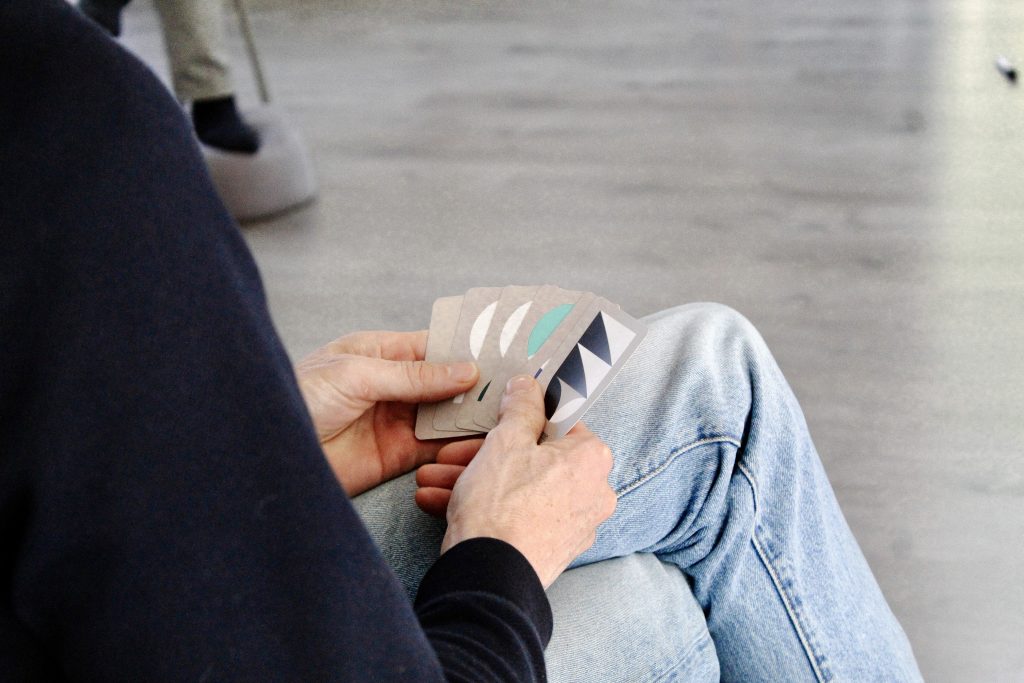
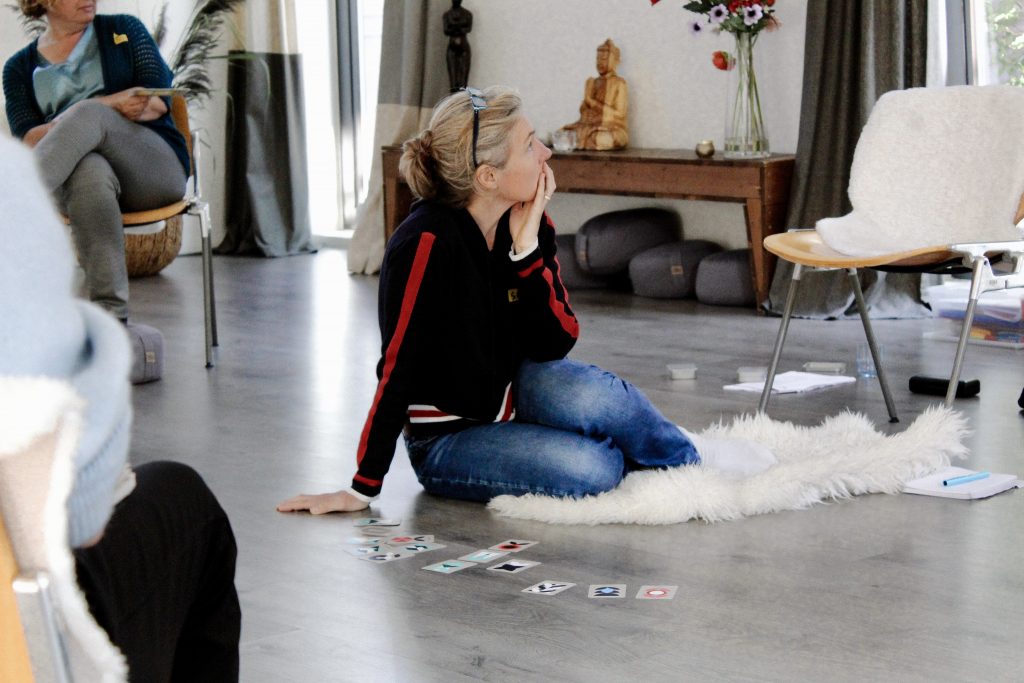
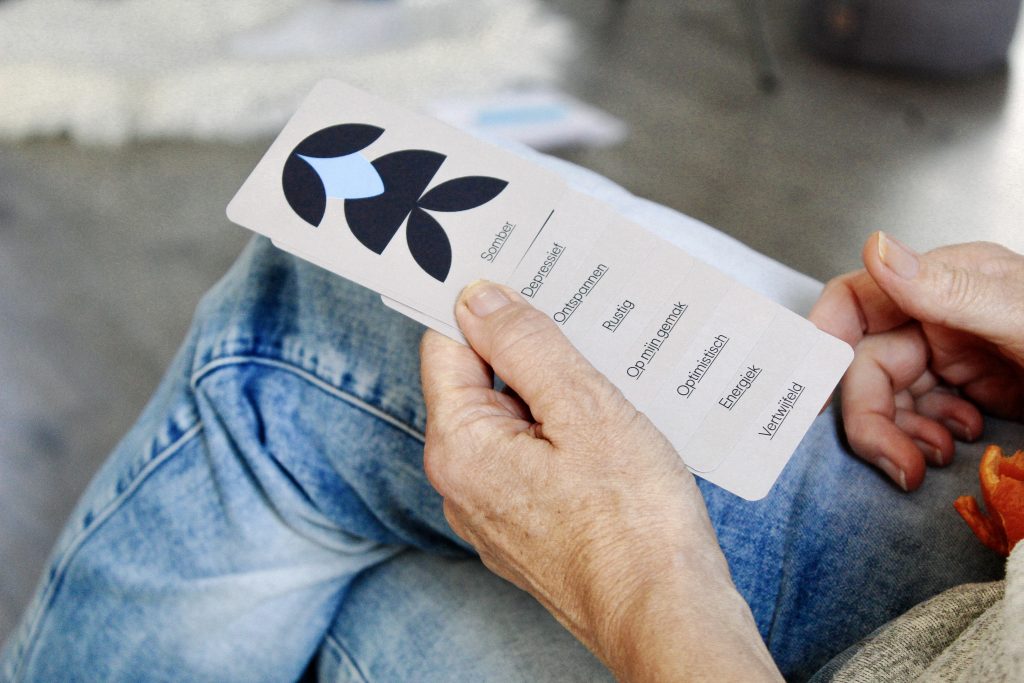

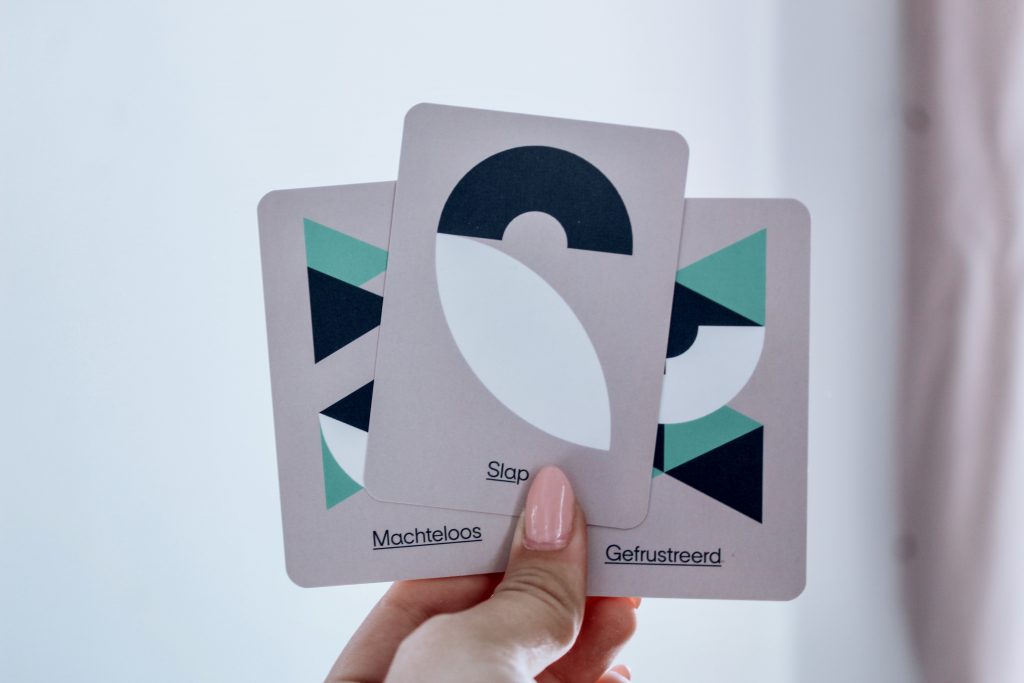
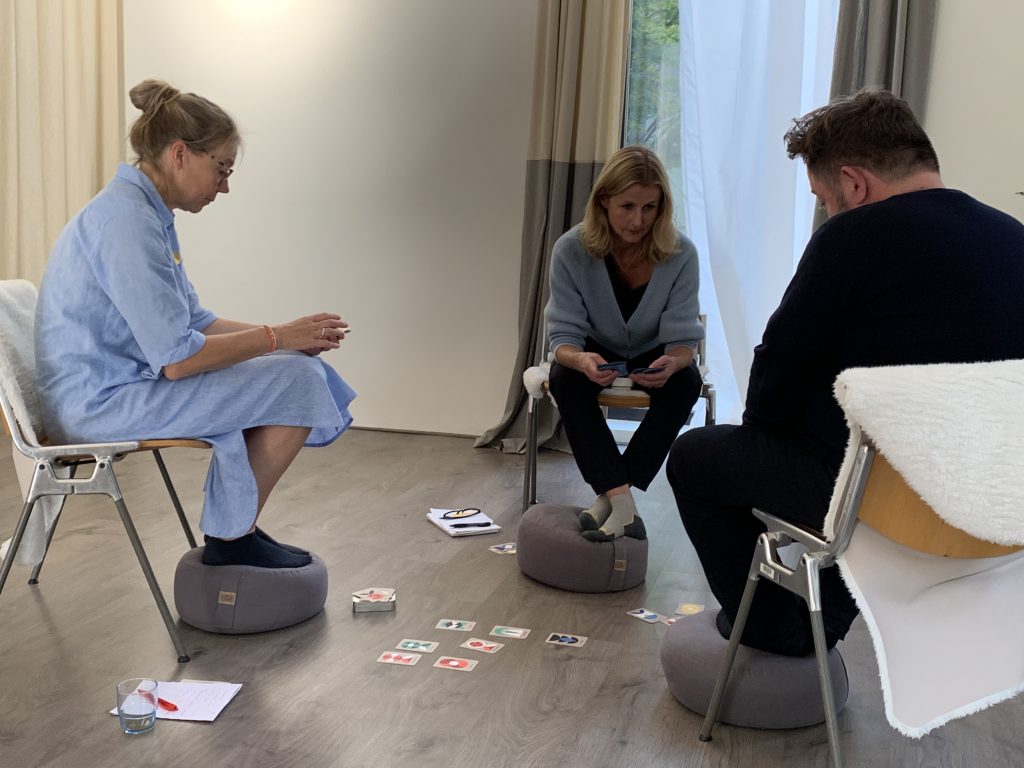
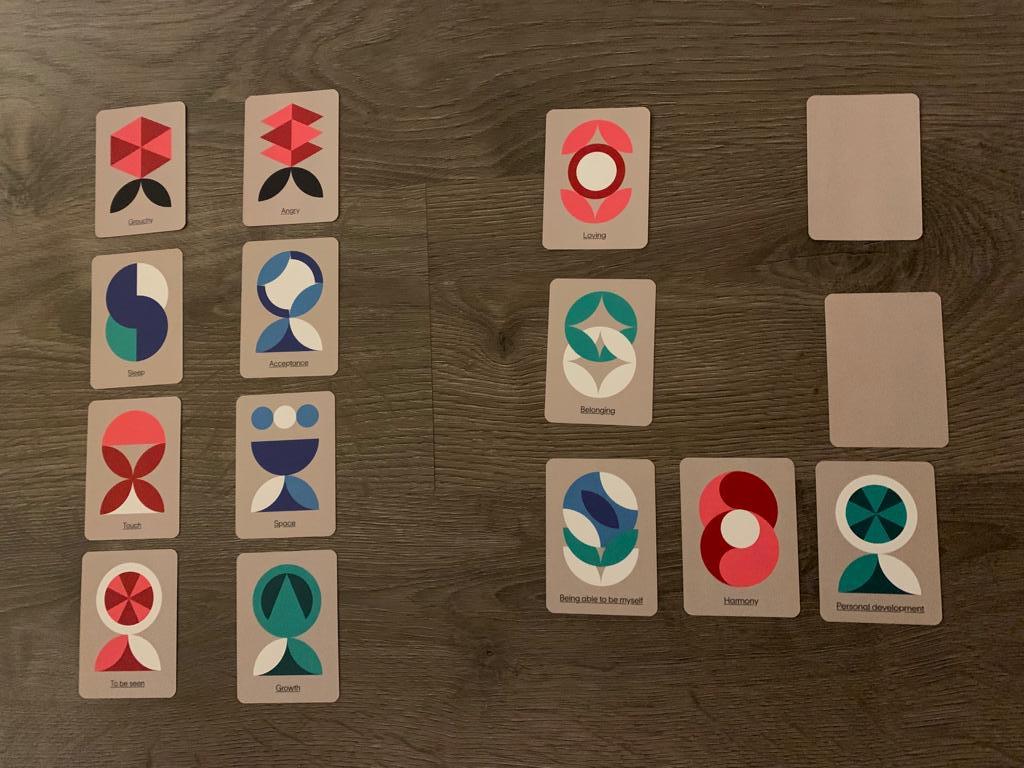
Equanimity kaarten bestellen?
De gevoelenskaarten en behoeftekaarten uit de trainingen zijn nu ook te bestellen. De kaarten zijn op voorraad in het Nederlands en het Engels. Andere talen kunnen gemaakt worden op aanvraag.


